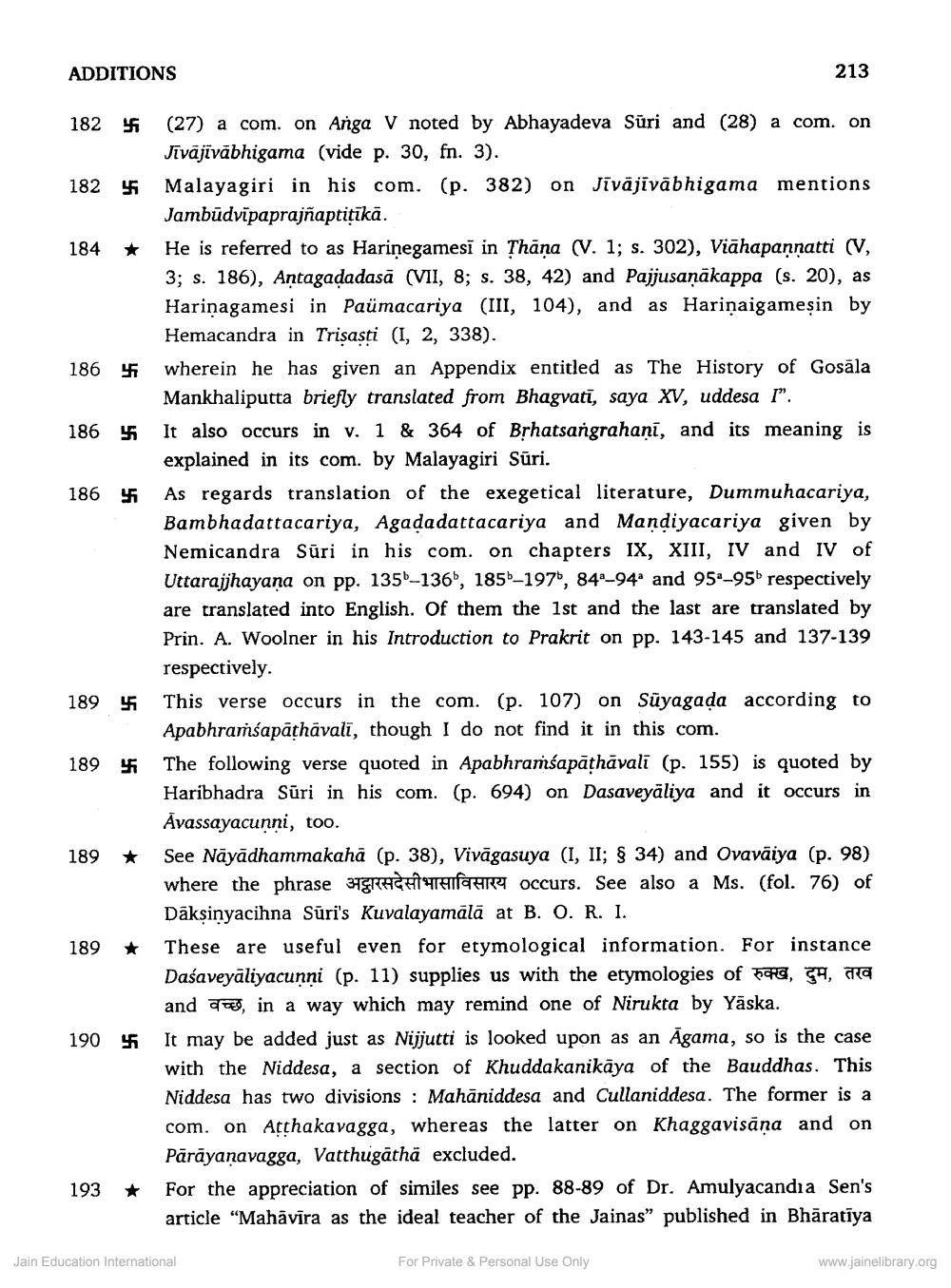________________
ADDITIONS
213
1824 (27) a com. on Anga V noted by Abhayadeva Sūri and (28) a com. on
Jīvājīvābhigama (vide p. 30, fn. 3). 182 41 Malayagiri in his com. (p. 382) on Jīvājīvābhigama mentions
Jambūdvīpaprajñaptiţikā. 184 * He is referred to as Harinegamesi in Thāna (V. 1; s. 302), Viāhapannatti (V,
3; s. 186), Antagadadasā (VII, 8; s. 38, 42) and Pajjusanākappa (s. 20), as Harinagamesi in Paümacariya (III, 104), and as Hariņaigameşin by
Hemacandra in Trisasti (1, 2, 338). 186 $ wherein he has given an Appendix entitled as The History of Gosāla
Mankhaliputta briefly translated from Bhagvatī, saya XV, uddesa I”. 186 55 It also occurs in v. 1 & 364 of Brhatsangrahani, and its meaning is
explained in its com. by Malayagiri Sūri. 186 $ As regards translation of the exegetical literature, Dummuhacariya,
Bambhadattacariya, Agadadattacariya and Mandiyacariya given by Nemicandra Sūri in his com. on chapters IX, XIII, IV and IV of Uttarajjhayana on pp. 1350-1361, 1856-197', 842-949 and 95-956 respectively are translated into English. Of them the 1st and the last are translated by Prin. A. Woolner in his Introduction to Prakrit on pp. 143-145 and 137-139
respectively. 1894 This verse occurs in the com. (p. 107) on Süyagada according to
Apabhramśapāthāvali, though I do not find it in this com. 189 451 The following verse quoted in Apabhramsapathāvali (p. 155) is quoted by
Haribhadra Sūri in his com. (p. 694) on Dasaveyaliya and it occurs in
Āvassayacunni, too. 189 * See Nāyādhammakahā (p. 38), Vivāgasuya (I, II; $ 34) and Ovavāiya (p. 98)
where the phrase HERHEHYTHICARE occurs. See also a Ms. (fol. 76) of
Dāksinyacihna Sūri's Kuvalayamālā at B. O. R. I. 189 * These are useful even for etymological information. For instance
Daśaveyāliyacunni (p. 11) supplies us with the etymologies of hoa, ga, da
and day, in a way which may remind one of Nirukta by Yāska. 190 451 It may be added just as Nijjutti is looked upon as an Agama, so is the case
with the Niddesa, a section of Khuddakanikaya of the Bauddhas. This Niddesa has two divisions : Mahāniddesa and Cullaniddesa. The former is a com. on Atthakavagga, whereas the latter on Khaggavisāna and on
Pārāyanavagga, Vatthugäthä excluded. 193 * For the appreciation of similes see pp. 88-89 of Dr. Amulyacandia Sen's
article “Mahavira as the ideal teacher of the Jainas” published in Bhāratiya
Apabbrar
Jain Education International
For Private & Personal Use Only
www.jainelibrary.org




